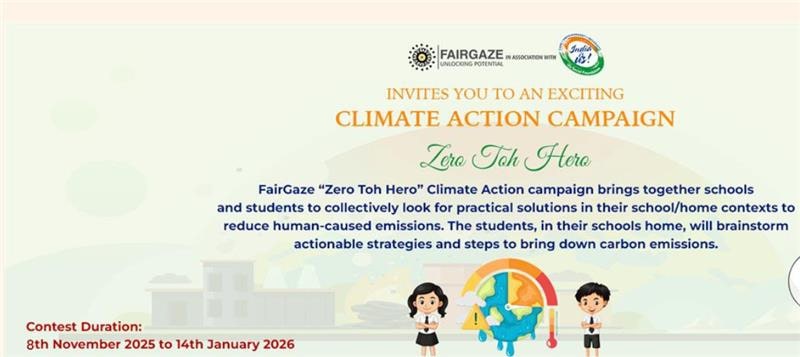
The Benefits and Challenges of Multilingual Education
Editorials News | May-21-2024
Effective education in the globalized environment is progressing to the use of the multilingual system as a catalyst for teaching and learning processes. As people and civilizations continue to increase in number and interconnect the need to be able to speak more than one language is not only a plus but a must in many circumstances. While learners benefit from ME in several ways, the idea itself also has certain drawbacks. It is important for educators as well as policymakers along with parents who are managing and guiding the educational system hence understanding both aspects is very important.
In this case, these are Some of the Advantages of having Multiple languages in education.
Cognitive Advantages
In multiple studies, it has been identified that students or people who are conversant in multiple languages benefit from better cognitive skills. It increases their capacity for memory, solving problems, and critical thinking and draws secular communication skills. Multilingual learners are said to be more effective in handling multiple responsibilities and are more endowed in the creativity aspect. This school helps those who study in it develop a more versatile method of thinking due to the constant shift between two or more languages.
Academic Performance
A lot of students who undertake multilingual education programs end up performing better than their monolinguistically instructed counterparts. When it comes to other subject areas such as mathematics and science, students who studied other languages and fluently switched between the two language modes have higher problem-solving performance. Second, ME, when implemented in the first language, enhances literacy in the first language simultaneously enhancing the overall learning process.
Cultural Awareness and Sensitivity
Giving students options in which language they would want to study or learn urges them to be more sympathetic citizens of the world. The explanations given illustrate how the transfer of cultural diversity enables students to embrace the world more tolerably. In these years when the Western and Islamic cultures are populous and there is conflict in one way or the other between them, this sensitivity is an important aspect of civilizing society.
Economic Opportunities
Diaz (2011) asserts that globalization has made fluency in different languages a valuable strength in today’s workplace. As we have seen more and more often employers are looking for motivated candidates with the ability to work in different languages and cultures. A multilingual person ends up having a better understanding of the job that is open to him/her thereby earning higher wages. In any business, politics, and liaison, language proficiency is one of the most crucial elements.
Multilingual education is a unique teaching model that can be considered one of the most challenging courses in a school.
Resource Constraints
The strategy also has implications for financial and human capital in that delivering multiple languages education demands human capital in the form of skilled teachers, educational resources, and funds. The attainment of these needs is however a challenge since many schools especially those in poor districts have a hard time meeting the needs. The sustainable implementation as well as getting, holding, and creating the curriculum with multiple languages can be expensive and/or organized.
Teacher Training and Availability
Appropriate approaches in multilingual education require competent teachers who have mastery of the languages that are used in the classroom and who have been trained in the appropriate use of languages. This specialized form of teaching is not always easily found; furthermore, existing teachers may need professional development. Finding and employing quality teachers is a crucial issue of concern among many academic institutions of learning.
Standardization and Curriculum Development
Developing a curriculum that at the same time will address several languages, also with compliance to educational systems is a challenging process. Maintenance of teaching several languages without detriment to the quality of the teaching as well as learning of any one language is not an easy process and calls for good planning and continual assessment. The subject of creating pass rates has remained open to debate and therefore it becomes difficult to ensure consistency in program quality.
Societal and Political Factors
This requires an understanding of the political and societal factors that define language policies in a given country to have the best chances of successful implementation of multilingual education. In some areas, some languages may for one reason or another be given more recognition than others whether it be on a historical, political, or cultural basis. This may cause various conflicts and criticisms rooted in communities who believe their languages are suppressed.
Navigating the Path Forward
Nevertheless, having examined the challenges of multilingual education above, we can see that its benefits far outweigh the challenges, making it a worthy cause to pursue. To address the challenges, stakeholders ought to act in unison to construct more appropriate solutions. This entails support in training teachers, funding support, and providing sustainable support for communities to participate in the decision-making process.
In conclusion, the provision of content in more than one language is a noble pursuit for enhancing individuals as well as societies. Through supporting the attainment of good academic results, learner’s thinking processes, cultural relations, and economic freedom the facility prepares learners for a world that is a global village. The challenges however are not unbearable and are within efforts that can be undertaken. With sincere and effective cooperation and by employing better approaches to the goal of the multilingual education of children, it becomes possible to pave the way for the children of the future and open a better future for them and an integrated and highly tolerant world.
Anand School of Excellence
Related News
-
Nepal's Hydropower Projects
-
Improving Education in Nepal
-
Women's Empowerment in Nepal
-
Nepal's Agricultural Development
-
Advances in Russian Neuroscience: New Hope for Patients
-
Russian Scientists Discover New Gene Therapy Techniques
-
Russia's Biomedical Industry: Growing Innovations
-
History of Indigo Plantation in Colonial India
-
Diwali: Festival Of Lights Not Crackers
-
Impact of Social Media on the Culture
Most popular news
- The Law Of Equivalent Exchange
- Essay On Issues And Challenges Of Rural Development In India
- Srinivasa Ramanujan And His Inventions
- The Youth Is The Hope Of Our Future!
- Poverty In India: Facts, Causes, Effects And Solutions
- Top 20 Outdoor Games In India
- Festivals Of India: Unity In Diversity
- Role Of Women In Society
- The Impact Of Peer Pressure On Students' Academic Performance
- Books As Companion



